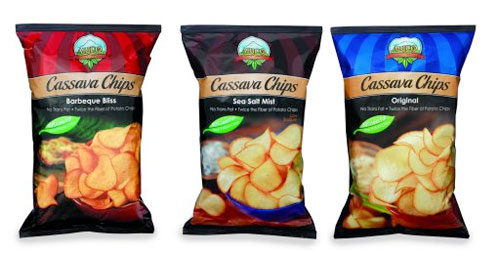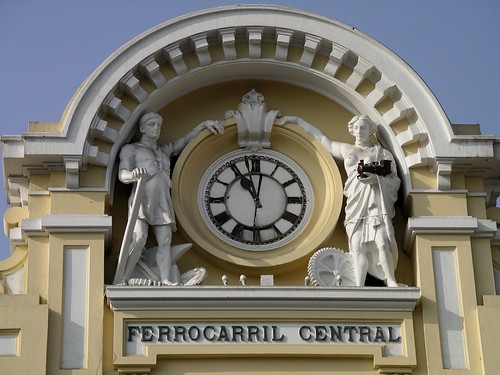"Men [and women] who wish to know about the world must learn about it in its particular details."
Heraclitus
We've now been in Lima for over three weeks, and we've already experienced so much. We just finished the process of choosing courses, so we'll tell you some about that in this post. After that, we thought it'd be fun to show some prices of things, since it's a different world of payment here. And finally, since Paul loves fun facts so much, we've made a list of various facts you'll probably find quite interesting.
Courses
We've been very busy in the past week choosing our courses. All courses are taught in Spanish of course, since it's a Peruvian university. The credit system here is also different than in the US. A 2-credit course here is equal to a 3-credit course in the US, while a 4-credit course here is equal to a 5-credit course in the US. The college structure is different as well. Many Peruvian students start college at age 15 or 16, spending their first two years doing general studies. After this each student declares a major, and is required to stick with that major throughout college. Just about every US student would pass out if we had to do that. Luckily, we don't!
As of the 22nd we registered for our courses, so for those of who are interested, here they are:
Caitlyn's Courses
Advanced Academic Editing and Peruvian Culture (required by IFSA)
Peruvian Social Reality (required by IFSA)
Linguistics 305: Sociolinguistics
Anthropology 218: Quechua
Paul's Courses
Advanced Academic Editing and Peruvian Culture (required by IFSA)
Peruvian Social Reality (required by IFSA)
Anthropology 157: Urban Anthropology
Anthropology 210: Anthropology of Religion
Anthropology 218: Quechua
You might notice that we both are taking Quechua. Paul needed a credit in linguistic anthropology, so he looked into the class, and liked it so much he invited Caitlyn to join! It may seem crazy to start learning about another culture, and it's language, in a language (Spanish) we're still trying to perfect. But in fact it seems to help us get better at speaking Spanish, while also learning about Quechua. Caitlyn's Sociolinguistics course goes perfectly with her Linguistics major, while Paul's Urban Anthropology and Anthropology of Religion courses go perfectly with his Anthropology major.
 |
| [thanks to] |
Prices (Peru vs. USA)
Note: all prices are approximate, but close to exact.
Food:
| most food and meals are much cheaper than in the US
| higher end foods inflate to equal dollar amounts
| higher end restaurants inflate to about equal dollar amounts
| bottle of Coke........................................................................ 1.2 soles (45 cents)
| vending machine candy bars, chips, drinks........................... 80 centavos (25 cents)
| fine dining restaurant meal................................................... 50-60 soles ($20-22)
| lunch with drink, salad, entrée, and dessert.......................... 11 soles ($3.50)
 |
| [thanks to] |
Clothes:
| some are cheaper, some inflate to similar prices
| as in the US, prices depend on the brand
| name-brand shoes are much more expensive
| Caitlyn's new jeans...................................................... 80 soles ($30)
| Paul's new sweater...................................................... 20 soles ($7.50)
| Pair of Vans (which we did not buy)............................ 230 soles ($85)
 |
| [thanks to] |
Electronics:
| the cheaper end is about the same
| the higher end is much more expensive
| Paul's basic alarm clock........................ 40 soles ($15)
| Basic cell phones.................................. 70 soles ($25)
| Touchscreens, Smartphones................. 2,200+ soles ($800+)!
 |
| [thanks to] |
Transportation:
| prices are much cheaper overall
| combis take longer but are the cheapest
| taxis are private and quicker, but cost more
| fuel prices are much higher| Combi Ride, Our House to Campus..................................... 1.70 soles (60 cents)
| Taxi Ride, Our House to Campus........................................ 10-12 soles ($3.50)
| 1 Gallon of Gas................................................................... 16 soles ($6)
 |
| [thanks to] |
Miscellaneous:
| some are equal, while others are much lower| Paragliding.................................................. 155 soles ($55)
| Fountain Park (from our last post)............... 4 soles ($1.50)
| Park of Legends (Zoo).................................. 9 soles ($3.25)
| Movie Theater weekends............................. 24 soles ($9)
| Move Theater Tuesdays.............................. 9 soles ($3.25)
 |
| [thanks to] |
Needless to say, we go to the movie theater every Tuesday. It's a very nice one with stadium seating, cushy seats, and better-than-average screen quality. Movies are shown both dubbed over into Spanish and in English with subtitles (we watch the latter). Also, it's built into the side of a massive cliff, so you're technically in a cave inside a hill. How is that not cool?
Fun Facts
Temperature:
| there is no heating/cooling - even the nicer parts, where we live, have none
| Lima, like all oceanside cities, hardly changes in temperature
> it goes from 60 at night to 65 in the day - anyone from Ohio would think that’s crazy
| it's also very humid, as seen below
 |
| [thanks to] |
Time:
| natives refer to time as Peruvian Time -- everything it about 15 minutes behind schedule
> you'd think scheduling 15 minutes ahead of time would work, but it doesn't
| on that note, for classes at PUCP are in the same style
> if class starts at 4, the professor usually arrives around 4:10, and class starts at 4:15
> classes will either start late, or finish 10-20 minutes early, or have a break in the middle
> Paul’s 3-hour course meets 10-11, then is on break 11-11:25, then goes until 1
> during class breaks you can get coffee, go to the bathroom, talk with friends, anything, so long as you're back
 |
| [thanks to] |
Social Interaction:
| the norm when saying hi/bye is for girls to touch cheeks
> guys shake hands with other guys, but touch cheeks with girls
| most people here are very nice, and welcoming, and understanding
> in fast food restaurants, and the school dining halls, workers give very good service
> when you finish, or go to throw away a tray, a worker will offer to throw it away for you
> this happens occasionally/rarely in the US, but literally almost always here
> on a combi you may overpay on accident - most will give you change back even if you don't know you deserve it
| on the other side, while people are never mean, some will try and take advantage of you
> on a combi you may overpay if you don't have exact change
> sometimes when you ask for change the person will try and trick you into not getting any
 |
| [thanks to] |
Public Spaces:
| things are much more informal on the streets, a fact of it being both Peru and a big city
> there are beggars, street vendors, money-exchangers (dollars to soles, vice versa) on the streets
> people sell food/newspapers/novelty items to cars, while people drive
> when cars stop at lights the people walk between them (or get on combis) and sell
| many people let their dogs run around without leashes > people here actually understand dogs, and how to treat/train them
> all dogs we've seen never run away, or bite, or fight, and are very city-smart
> in our part of town there are few, but in much of the city there are many stray dogs
 |
| [thanks to] |
Food:
| they have yogurt for drinking, thinner but just as tasty
> you can get normal stuff, but our families usually have drinkable stuff
| some of the most common drinks here are peach, pear, and mango juice
> Paul’s favorite fruit is peach, Caitlyn’s is mango, so it’s working great for us!
| cinnamon seems to be a favorite here, in nearly every kind of food/drink
> we’re both convinced Peru consumes 75% of the world’s cinnamon supply
> many things have cinnamon in them - desserts of course, meats, pastas, drinks, even gelatins
> more often than not it works well and is very good, but sometimes it does not work at all
| both our families store milk, and eggs, in the cabinets
> perhaps it's a fridge corporation conspiracy that makes us put our stuff in fridges?
> the only milk we’ve had is 1%, but it’s creamier than US 2%, and tastes very much better
| nearly every single meal (no exaggeration) is carbs and protein, and nothing else
> every single school lunch is rice, a roll, meat, and sometimes potatoes as well
> most of our dinners at home are rice and/or potatoes, with meat
> Caitlyn’s mom usually makes her a salad on the side, Paul´s usually makes him a soup
| here people eat a very large lunch at 2 or 3, then no other meals for the rest of the day, just snacks
> this is the point in which fruits and vegetables enter the diet, in snacking
| fruit and vegetables here are usually local/regional, and much cheaper
> 2 pounds of strawberries costs 5 soles (about $1.75)!
 |
| [thanks to] |




















































